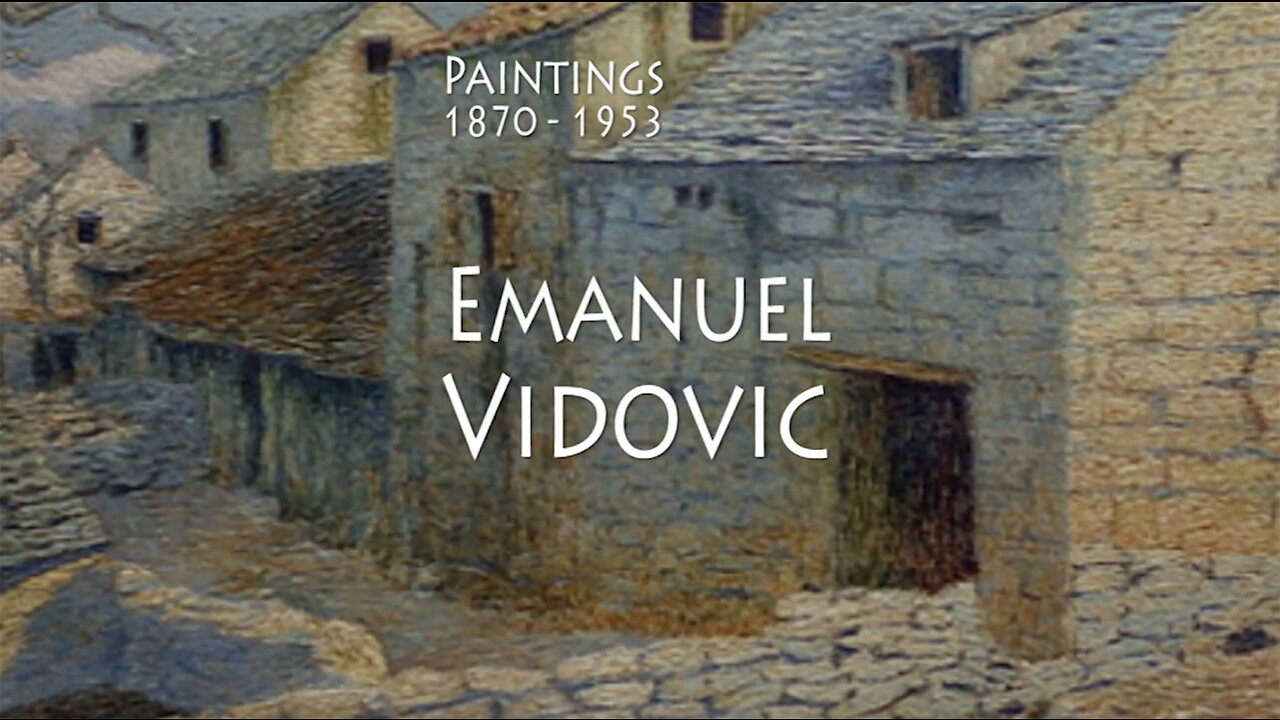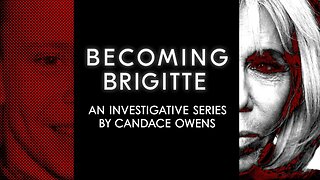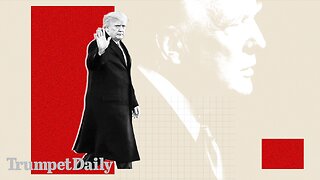Premium Only Content

Emanuel Vidovic, Croatian, Zagreb, Exhibition, Museum, Belgrade, Yugoslavia, Oil on Canvas
In 1897 he spent almost a year in Chioggia, this time in the company of Ante Katunarić. From this productive time come views of Chioggia, Venice and Giudecca, where sunlit forms are portrayed in shimmering strokes of colour, and details are all but lost.[1] Back in Split in 1898, Vidović painted local scenes in the same style. He became alternate drawing master at the high school, and set up his first studio. That year, also, he married Amalija Baffo from Chioggia.
Establishment of the Literary-Art Club (Književno-umjetničkog kluba) in 1900 brought modern art to Split. Emanuel Vidović was one of its most active members, organizing its first exhibition together with Josip Lalić in 1901. In addition to his oil paintings he also showed a few caricatures. In 1903, Vidović held his first solo exhibitions in Split and Zagreb, and appeared in group exhibitions in Milan, London, Vienna and Sofia.
In 1908 Vidović was one of the organizers of the big Dalmatian art exhibition, and in the same year along with Katunarić and Dincić began to publish a satirical paper Duje Balavac. Ivan Meštrović and Vidović founded the Medulić Society, along with other young artists of the area. In 1909 Vidović was appointed professor of drawing at the School of Crafts (Obrtnoj školi) in Split.
After the war, in 1919, Vidović held his second solo exhibit in Split, which later transferred to Zagreb, Belgrade, and Osijek. Then he moved into the studio which he used for 1919–1942 in the attic of the former government building on Klaićev Square.
In 1923 he held a solo exhibit in Prague, and in 1924 a joint exhibit with Anđelo Uvodić opened at the salon of Ivan Galić in Split. Emanuel Vidović organized the Great Jubilee Exhibition in 1929 in Split and Zagreb, and 1931 in Belgrade. At this time his oil paintings began to show new themes – still lifes and interiors, and he also exhibited landscapes in pastels.
During the early 1930s, Vidović created a significant cycle of Trogir landscapes which were exhibited in Split in 1936. These new works represented a departure from his earlier literary symbolism and were warmly received both by the public and by critics. In 1939, Vidović took part in the festival, "Half a century Croatian art" (Pola vijeka hrvatske umjetnosti) in Zagreb, and also held a new solo exhibit at Salon Galić in Split. They showed interiors of churches and his studio, and still lifes.
During 1938–1942 he painted a series of church interiors, developing a new approach to depicting space. Deep three-dimensional spaces taken from many different viewpoints are balanced by a refined treatment. The Trogir cycle of 1936 was welcomed by critics, and he was elected to participate in the Venice Biennales of 1942 and 1952. During the war he retired to his studio and focused on painting interiors and still lifes.
-
 1:05:35
1:05:35
Man in America
15 hours agoFort Knox & Trump’s Secret Gold Move—The Financial Reset NO ONE Is Ready For?
96.2K125 -
 2:21:20
2:21:20
Robert Gouveia
12 hours agoTrump Goes to SCOTUS! Judge CAVES on DOGE? Fani Willis Not Happy!
120K32 -
 20:41
20:41
Stephen Gardner
12 hours ago🔥You Won't BELIEVE What JUST Happened To Don Trump Jr.!!
119K201 -
 58:00
58:00
The StoneZONE with Roger Stone
10 hours agoEuropean Leaders Resist Trump Peace Overtures To Their Own Demise | The StoneZONE w/ Roger Stone
81.7K12 -
 9:29
9:29
AlaskanBallistics
12 hours ago $8.88 earnedWyoming Suppressors and Rifles at Shot Show 2025
107K6 -
 1:06:40
1:06:40
Donald Trump Jr.
16 hours agoThe Left is Taking one L After Another, Live with Michael Knowles | Triggered Ep. 217
188K135 -
 47:17
47:17
Kimberly Guilfoyle
16 hours agoWoke Gets DOGE’d, Live with AJ Rice & Jarrett Stepman | Ep. 197
137K44 -
 20:11
20:11
Candace Show Podcast
14 hours agoBecoming Brigitte: Candace Owens x Xavier Poussard | Ep 6
206K357 -
 8:25:38
8:25:38
Dr Disrespect
19 hours ago🔴LIVE - DR DISRESPECT - ELDEN RING DLC - REVENGE
201K22 -
 54:22
54:22
LFA TV
1 day agoThe End of the Trans-Atlantic Alliance | TRUMPET DAILY 2.17.25 7PM
54.9K7